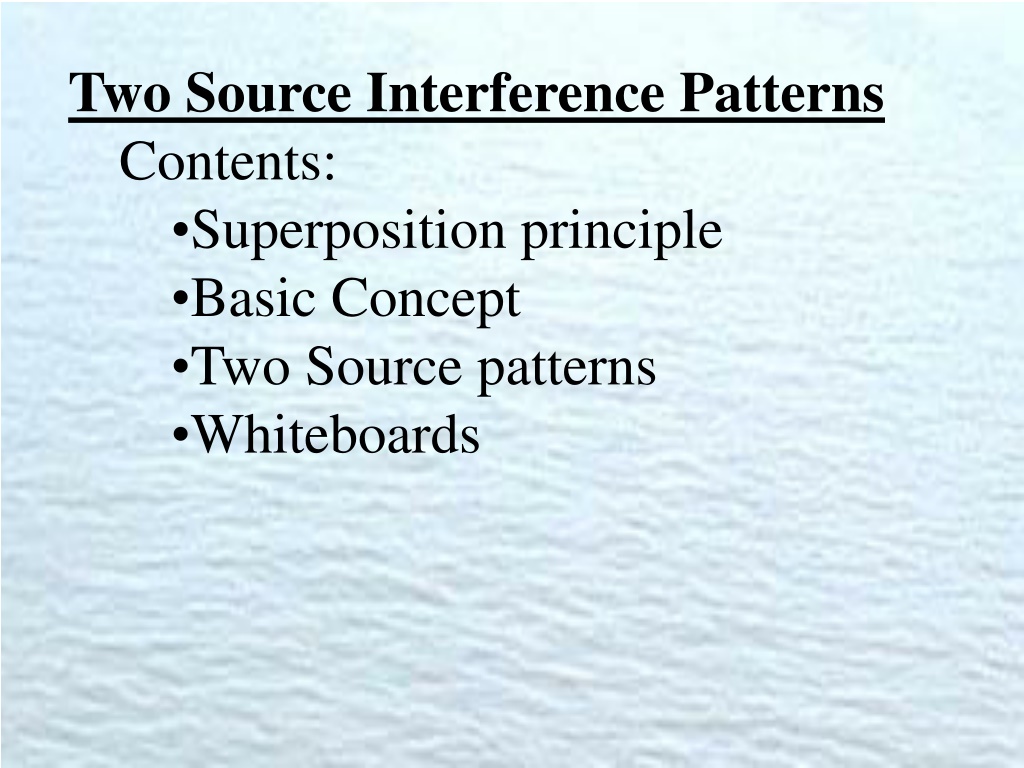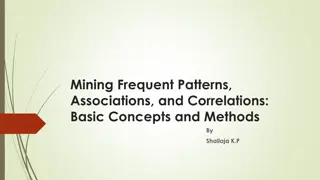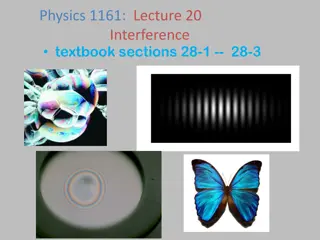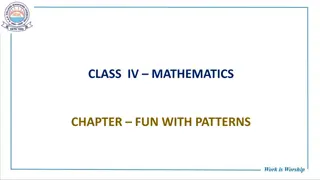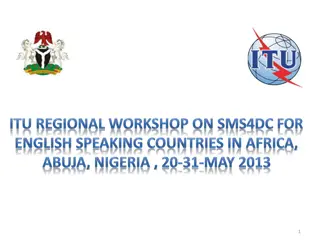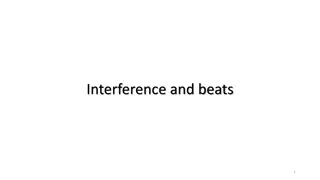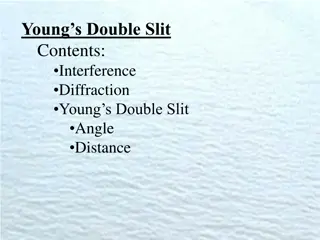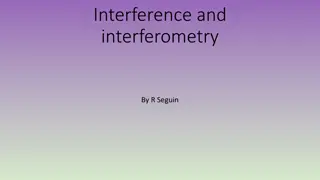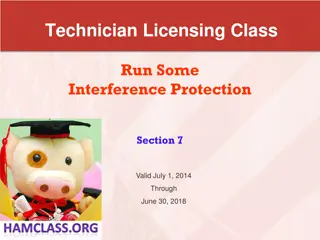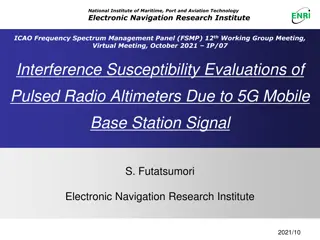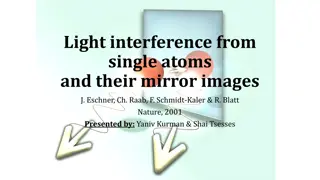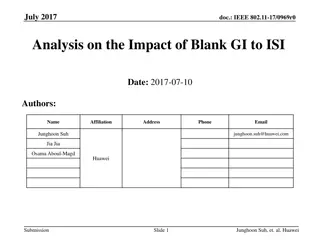Understanding Two-Source Interference Patterns
Dive into the fascinating world of two-source interference patterns with the superposition principle, constructive and destructive interference concepts, and demonstrations illustrating how overlapping waves interact. Explore scenarios like people talking simultaneously and ripples on a pond to grasp the essence of wave interference. Unveil the crucial role of distance differences in achieving constructive or destructive interference in wave interactions.
- Wave Interference
- Superposition Principle
- Constructive Interference
- Destructive Interference
- Overlapping Waves
Download Presentation

Please find below an Image/Link to download the presentation.
The content on the website is provided AS IS for your information and personal use only. It may not be sold, licensed, or shared on other websites without obtaining consent from the author. Download presentation by click this link. If you encounter any issues during the download, it is possible that the publisher has removed the file from their server.
E N D
Presentation Transcript
Two Source Interference Patterns Contents: Superposition principle Basic Concept Two Source patterns Whiteboards
Principle of superposition Overlapping waves add together Examples: People talking at the same time Shining a flashlight across the room Ripples on a pond overlapping:
Principle of superposition Overlapping waves add together Demo pulses on wave device Destructive interference Constructive interference
Basic Concept Superposition - Overlapping waves add. Constructive interference = crest meets crest Destructive interference = crest meets trough Destructive Constructive
A B If the difference in distance from the sources is an integer number of wavelengths, you get constructive interference
A B If the difference in distance from the sources is an integer number of wavelengths, you get constructive interference
A B If the difference in distance from the sources is an integer number of wavelengths, you get constructive interference Difference is: 0 , 1 , 2 , 3
A B If the difference in distance from the sources has a remainder of a half wavelength, you get destructive interference:
A B If the difference in distance from the sources has a remainder of a half wavelength, you get destructive interference:
A B If the difference in distance from the sources has a remainder of a half wavelength, you get destructive interference: Difference .5 , 1.5 , 2.5 , 3.5
Basic Concept Two Source Pattern Constructive: Crest meets crest Trough meets trough Destructive: Crest meets trough Demo speakers Demo Laser Slits
Youngs Double Slit Experiment Monochromatic, coherent light Light spreads out from slits Screen has sum of two sources Interference pattern on screen
Interference Sources L1 L2 When the difference in distance (L1- L2) is an integer number of wavelengths (0, 1, 2, 3 ) = Constructive remainder of a half (1/2, 1 1/2, 2 1/2, ) = Destructive
To figure out two source problems: 1. Calculate the 2. Find the difference in distance 3. Find out how many it is 4. Decide: __.0 = constructive __.5 = destructive __.1 = mostly constructive __.25 = ???
Interference - Example Sources 3.21 m 1.22 m In air where the speed of sound is 350 m/s, two loudspeakers produce a frequency of 700. Hz. a) what is the wavelength of the sound? b) if we are 3.21 m from the left speaker, and 1.22 m from the right speaker, is it loud or soft?
Interference Sources 3.21 m 1.22 m In air where the speed of sound is 350 m/s, two loudspeakers produce a frequency of 700. Hz. a) what is the wavelength of the sound? b) if we are 3.21 m from the left speaker, and 1.22 m from the right speaker, is it loud or soft? = (350 m/s)/(700 Hz) = 0.50 m (3.21-1.22) = 1.99 m (1.99 m)/(0.50 m) = 3.98 wavelengths so it is loud.
Whiteboards 1 | 2 | 3 | 4 | 5 | 6 | 7
Two speakers 3.0 m apart are making sound with a wavelength of 48.0 cm. A. What is the frequency of this sound if v = 343 m/s? v = f , 343 m/s = f(.48 m) f = 714.5833333 715 Hz
Two speakers 3.0 m apart are making sound with a wavelength of 48.0 cm. If I am 2.12 m from one speaker, and 3.80 m from the other, is it loud, or quiet, and how many wavelengths difference in distance is there? 3.80 m - 2.12 m = 1.68 m (1.68 m)/(.48 m) = 3.5 = destructive interference 3.5 wavelengths, destructive
Two speakers 3.0 m apart are making sound with a wavelength of 48.0 cm. If I am 5.17 m from one speaker, and 8.05 m from the other, is it loud, or quiet, and how many wavelengths difference in distance is there? 8.05 m - 5.17 m = 2.88 m (2.88 m)/(.48 m) = 6.0 = constructive interference 6.0 wavelengths, constructive
Two speakers 8.0 m apart are making sound with a frequency of 250. Hz in phase where the speed of sound is 335 m/s. A) What is the wavelength of the sound? B)If I am 3.56 m from one speaker, and 9.59 m from the other, is it loud or quiet? 1.34 m, 4.5 wavelengths, quiet
Two speakers 11.00 m apart are in phase and making a frequency of 490. Hz where the speed of sound is 343 m/s. If I stretch a string that is 4.00 m long from the center of one of the speakers, and move the end about, what are the closest three distances from the other speaker that will create constructive interference? 7.50 m, 8.20 m, 8.90 m
Two speakers are at opposite ends of an 8.00 m long hall. They emit sound at a frequency of 457.333 Hz, and the speed of sound is 343 m/s. A. What is the wavelength of the sound? v = f , = v/f = (343 m/s)/(457.333 Hz) = .750 m .750 m
Two speakers are at opposite ends of an 8.00 m long hall. They emit sound at a frequency of 457.333 Hz, and the speed of sound is 343 m/s. B. A spot 4.1875 m from one end of the hall has what kind of interference? L1 = 4.1875 m L2 = 8.00 - 4.1875 = 3.8125 m (4.1875 m - 3.8125 m) = .375 m = ? (.375 m)/(.750 m) = .5 (Destructive) Destructive
Two speakers are at opposite ends of an 8.00 m long hall. They emit sound at a frequency of 457.333 Hz, and the speed of sound is 343 m/s. C. What distance separates a point of constructive and a point of destructive interference? Hmm - you want to go from an even wavelength of distance difference to a even plus one half . Figure it out yourself
Two speakers 3.0 m apart are making sound with a wavelength of 48.0 cm. If I am 2.00 m from one speaker, What is the minimum distance I can be from the other speaker to experience constructive interference? must be a difference in distance of 0, .48, .96, 1.44 m 1.52 works, 1.04 works, .56 C est impossible 1.04 m
Two speakers are at opposite ends of an 8.00 m long hall. They emit sound at a frequency of 457.333 Hz, and the speed of sound is 343 m/s. G. Can there be complete destructive interference if the speakers are moved to within 12 cm of each other? Why or why not? Seems like there never could be a difference of distance greater than .12 m . Figure it out yourself
